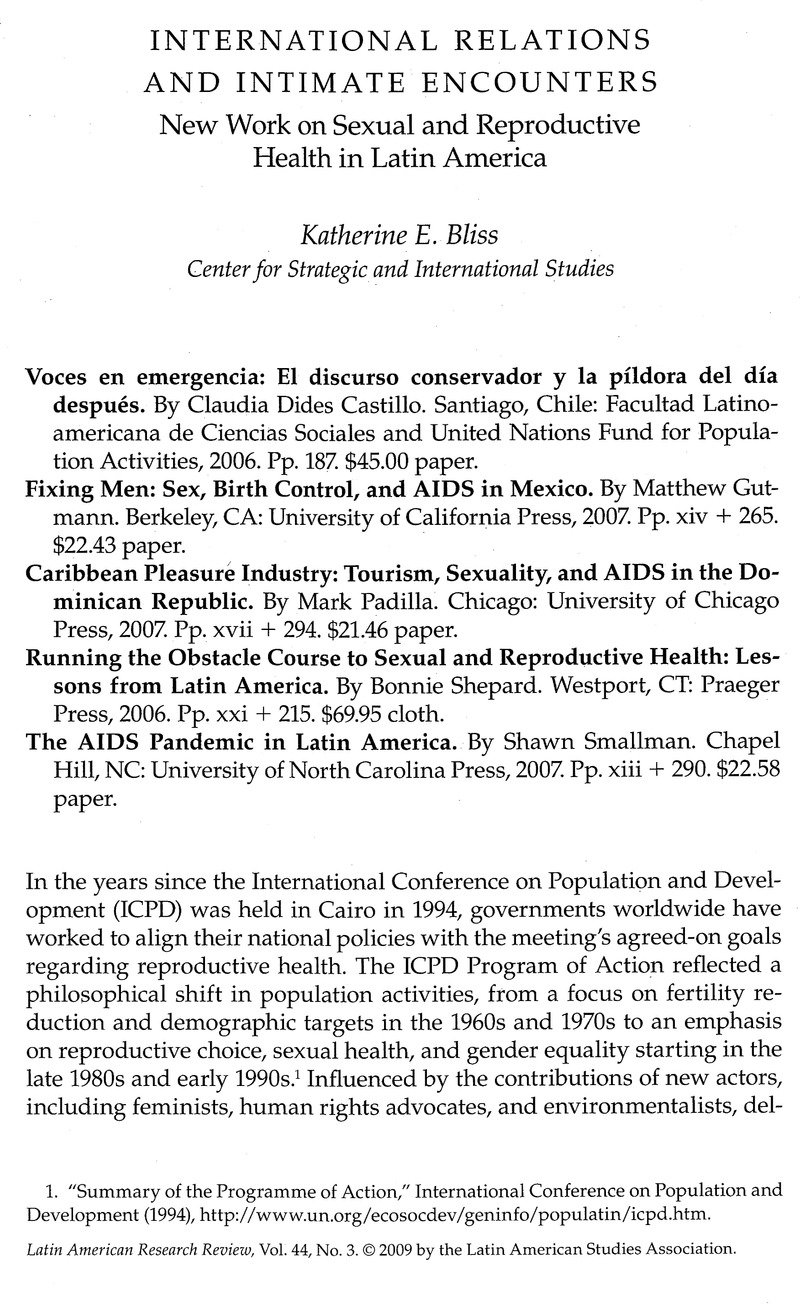Published online by Cambridge University Press: 05 September 2022

1. “Summary of the Programme of Action,” International Conference on Population and Development (1994), http://www.un.org/ecosocdev/geninfo/populatin/icpd.htm.
2. See, e.g., United Nations Fund for Population Activities, Investing in People: National Progress in Implementing the ICPD Programme of Action, 1994–2004 (New York: UNFPA, 2004), 2; United Nations Department for Policy Coordination and Sustainable Development, Report on the Fourth World Congress on Women (Beijing, China, September 4–15, 1995), http://www.un.org/esa/gopher-data/conf/fwcw/off/a–20.en; “Declaration of Commitment on HIV/AIDS: Global Crisis-Global Action,” United Nations General Assembly Special Session on HIV/AIDS (June 25–27, 2001).
3. Open-Ended Meeting of the Presiding Officers of the Sessional Ad Hoc Committee on Population and Development (Santiago, Chile, March 10–11, 2004), http://www.eclac.org/celade/noticias/noticias/6/14406/declaration_final.pdf.
4. On transvestites, see Don Kulik, Travesti: Sex, Gender, and Culture among Brazilian Transgendered Prostitutes (Chicago: University of Chicago Press, 1998).
5. Matthew C. Gutmann, The Meanings of Macho: Being a Man in Mexico City (Berkeley: University of California Press, 1996).
6. See, e.g., Denise Brennan, What's Love Got to Do with It? Transnational Desires and Sex Tourism in the Dominican Republic (Durham, NC: Duke University Press, 2004).